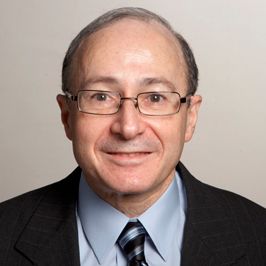Opinion
Video
Using IL-23 Inhibitors in Clinical Practice for Plaque Psoriasis
Author(s):
Benjamin Lockshin, MD, FAAD; and Jennifer Soung, MD, share their experience with IL-23 inhibitors for the treatment of plaque psoriasis in clinical practice.
Bruce Strober, MD, PhD, FAAD: Ben, can you share with me an anecdotal case of success that involves an IL-23 inhibitor, one that really was impactful for you?
Benjamin Lockshin, MD, FAAD: There’s a couple situations, and I think one of the most remarkable stories is the patient who’s failed a number of treatments and then finally goes on a [IL-]23 and they’re clear again. And that can be the most frustrating thing for a patient to cycle through medications and feel like you’re at the end of the line and that nothing else will work and if it does work, how long is it going to work? And to see a patient back in a year, 2 years, and they remain clear—it’s why I went into medicine. But I don’t reserve the IL-23s as second,
third, fourth line. I think it’s a great first-line consideration for all the reasons we talked about— the safety, the efficacy, the reliability of the dosing frequency—all of those things make it a clear choice for me to look at any patient who walks in my door and say, “You’re a great IL-23 candidate.”
Bruce Strober, MD, PhD, FAAD: Jennifer, how about you—any typical patient who really is memorable?
Jennifer Soung, MD: Oftentimes we think more injections, faster response, and I had a patient who was just at her wit’s end with scalp psoriasis so I decided to start an IL-23 and because she was just so miserable and kind of in tears that this was really bothering her and her psoriasis was starting to spread more to other areas of the body, I said, “OK, I’ll see you back out at 4 weeks” and that’s only after 1 injection. Usually I would wait at least 3 months to see the patient but after only 1 injection I was so surprised that her scalp was more than 50% better. It was the first time—just because I usually don’t see the patients that that early on—that I thought, wow, with even just 1 injection they can get a very early response. She also made an impression on me because at her follow-up visit my assistant told me, “Oh, she’s kind of upset” and I thought, great, that 1 injection didn’t really work; I’m going to have to add something else on top of this. She came in and she said: “Why has no one ever told me about this medicine before? Why are you the first dermatologist who’s offered a biologic to me?” And then I just [explained] that every dermatologist specializes in something different and I’m kind of strange; I like psoriasis. But I think it speaks to the fact that patients are really wanting treatment and that clear skin matters to them. Even though we may not think scalp psoriasis is maybe a big deal, because you can’t see it, like other areas of psoriasis, but this is how it was debilitating for this patient.
Bruce Strober, MD, PhD, FAAD: You know, I would extend that. You get this kind of patient at all age groups. So college-aged, women of childbearing who are raising their families, men in their 50s, and then elderly patients, too, all of whom I've brought the… IL-23 inhibition and really effectively changed their lives and really the gratifying aspect of it doesn’t change no matter what kind of patient you’re taking care of. It really is an equal-opportunity disease, psoriasis, across age groups and both genders, of course. So it’s great that we can employ 1 mechanism of action to many different types of patients and achieve great success.
Jennifer Soung, MD: I think what I’ve learned from my patients is that now that we have so many options, is that clear skin matters to them.
Bruce Strober, MD, PhD, FAAD: Exactly. In fact, if you survey patients as opposed to surveying dermatologists, what rises to the top is clear skin. Of course, they want safe drugs, but they assume that you’re giving them a safe drug as opposed to dermatologists who put safety above clear skin, understandably, because that’s how we’re trained, to do no harm and make sure that first and foremost, we don’t hurt our patients. So again, we’re looking at a mechanism of action that serves the needs and the preferences of both the providers and the patients who receive the medications.
Transcript is AI-generated and edited for clarity and readability.





